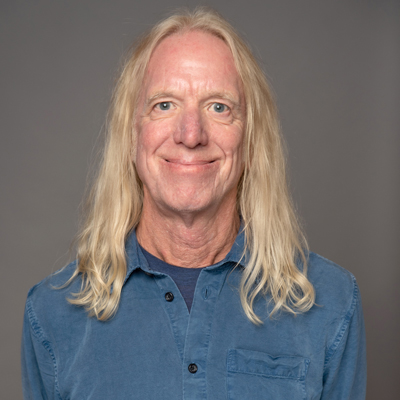Video art provides an immersive look at climate change
Tuesday, September 22, 2020
Sarah Cameron Sunde, an artist and director, combines performance, video, and public art to address climate change. The exhibition “36.5 / A Durational Performance with the Sea,” on view at the Georgia Museum of Art at the University of Georgia through January 17, will feature a cycle of four multi-channel videos, one from each location where Sunde has performed since 2015: the Netherlands (on view September 19 – October 18, 2020), Bangladesh (on view October 22 – November 22, 2020), Brazil (on view November 26 – December 20, 2020) and Kenya (on view December 24, 2020 – January 17, 2021). At each location, Sunde encourages community members to join her as she stands in ocean water for a full tidal cycle (12 to 13 hours) as the water rises and falls on her body. The performances are filmed in real time and turned into a durational video work of the same length.
The “36.5” project was inspired Hurricane Sandy in 2012, which resulted in much loss and destruction and showed the vulnerability of cities and humanity. Having seen the damage caused by climate change, Sunde hopes people can view it as a concrete event rather than an abstract phenomenon and urges them to be more attentive to how their actions affect the planet. Experiencing the “natural” without the “disaster” is a part of her work, which allows participants to slow down, observe, experience and consider the impact of sea-level rise by putting their own bodies in direct relationship with the water. By going around the world with this project, Sunde hopes to remind people that we all share the same moon, the same waters and the same planet, and we have to care more deeply about our shared environment.
When creating a work on location, Sunde partners with at least one local arts organization and a local filmmaker and makes sure to have been permitted or invited to work in the locations she chooses. The resulting sense of community promotes borderlessness in our oceans and planet. She writes, “There is simply no substitute for experiencing slow change on one’s body or witnessing it over the course of a day. [The experience] stays with participants and grants deeper understanding of our place in the world, which is the first step of many toward adaptation and resiliency.”
Jeffrey Richmond-Moll, curator of American art at the museum, said: “The power of Sarah Cameron Sunde’s ‘36.5’ is that, as viewers, we can do little else but respond both physically and emotionally to her immersive installations, [and] this is why we installed her work on three walls in our gallery, so that, to see them, the viewer literally steps into — and is thus surrounded by — Sunde’s performance.”
Through her work, Sunde urges humans as a species to be not intrusive and to recognize the power of art and the importance of earth. As Richmond-Moll puts it, “if Sunde’s performances are a wake-up call to the dangers of sea-level rise, they also show us that endurance and resilience are possible. Just as the tides recede at the end of her performance so too should we act now to stave off the perils of a changing environment.”
Related virtual events include:
• Four 24-hour livestream events, featuring each of the four locations around the world where Sunde performed “36.5,” including the Netherlands (October 14), Bangladesh (November 18), Brazil (December 16) and Kenya (January 13). Each livestream occurs shortly before the three-channel video in the museum’s gallery shifts from one location of the performance to the next. The cyclical nature and extended duration of this virtual event mirrors the natural rhythms and slow timeframe that are central to Sunde’s work, as she stands in ocean water for a full tidal cycle.
• “Water, Immersion, and Community in Sarah Cameron Sunde’s ‘Durational Performance with the Sea,’” an online artist talk and panel discussion on November 19, at 1 p.m. Panelists include: Michael Marshall, associate director of curriculum, director of the social ecology studio and professor of art, Lamar Dodd School of Art, UGA; Stephen Ramos, associate professor at the College of Environment and Design, UGA; Samantha B. Joye, Athletic Association Professor in Arts and Sciences in the Department of Marine Sciences, UGA; and Matthew Burtner, Eleanor Shea Professor of Music (Composition & Computer Technologies), the University of Virginia. This program is cosponsored by the Willson Center for the Humanities and Arts and is held in conjunction with Spotlight on the Arts 2020.
• A Family Day To-Go on December 12: Learn about holiday traditions from around the globe, and then create a festive work of art for your own holiday celebrations from home using a free art kit that you can pick up from the museum. Family Day is sponsored by Heyward Allen Motor Co., Inc., Heyward Allen Toyota and the Friends of the Georgia Museum of Art.
All events are free and open to the public unless otherwise noted. Those with a Zoom component will have a registration link on the museum’s website.
Museum Information
Funds from the W. Newton Morris Charitable Foundation and the Friends of the Georgia Museum of Art support exhibitions and programs at the Georgia Museum of Art. The Georgia Council for the Arts also provides support through the appropriations of the Georgia General Assembly. GCA receives support from its partner agency, the National Endowment for the Arts. Individuals, foundations and corporations provide additional museum support through their gifts to the University of Georgia Foundation. The museum is located in the Performing and Visual Arts Complex on the East Campus of the University of Georgia. The address is 90 Carlton Street, University of Georgia, Athens, Ga. 30602-1502. For more information, including hours, see http://www.georgiamuseum.org or call 706-542-4662.

